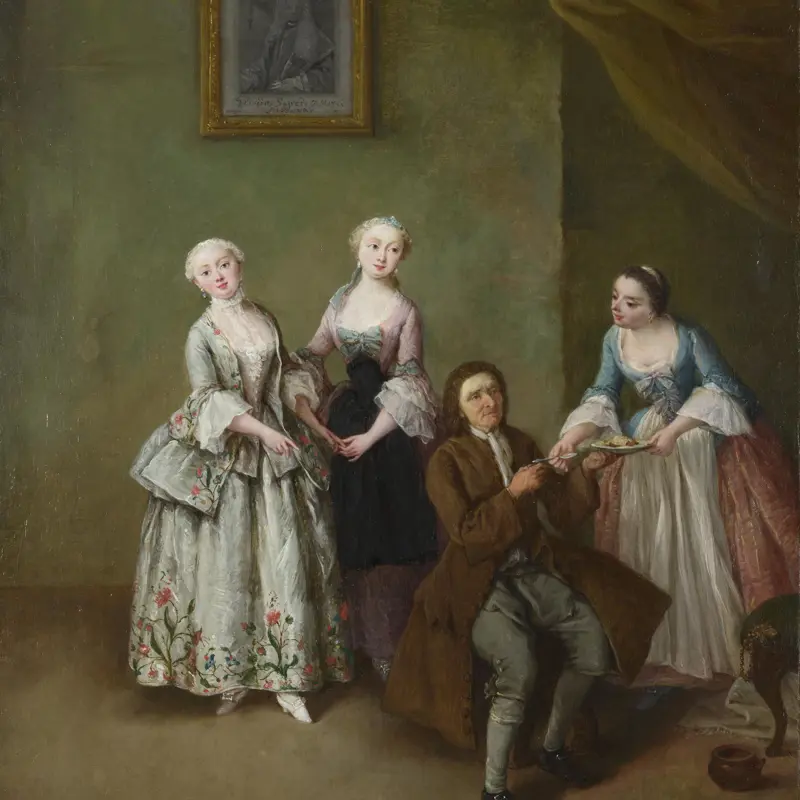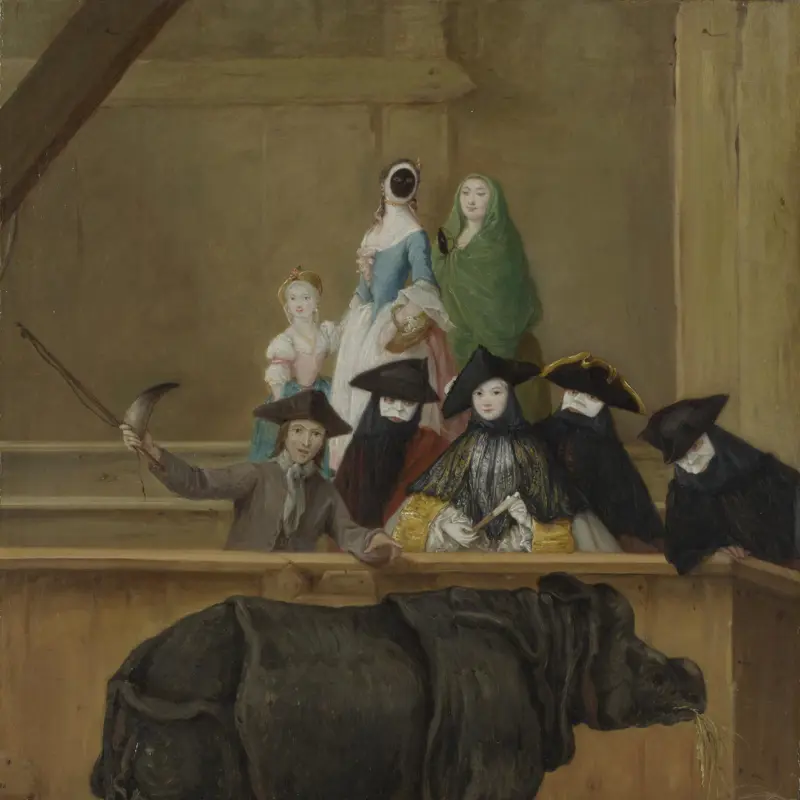Pietro Longhi, 'A Fortune Teller at Venice', about 1756
About the work
Overview
Fortune tellers were a popular attraction during the Venetian Carnival, celebrated during the 40 days of Lent. The one here is reading the palm of a fashionable lady; a fruit seller with a full basket stops to watch and a masked figure leans forward for a closer look. One woman, however, stares intensely towards us.
Longhi has placed the scene in one of the arcades of the Doge’s Palace. The inscription on the pillar probably refers to Francesco Loredan, who was elected Doge of Venice in 1752. On the wall behind, another inscription relates to the election of a priest for the parish of San Trovaso. Compared to the muted background, the foreground has plenty of patterns and textures, like the fortune teller’s embroidered skirt and her client’s lace shawl and flowing dress.
Key facts
Details
- Full title
- A Fortune Teller at Venice
- Artist
- Pietro Longhi
- Artist dates
- 1701 - 1785
- Date made
- About 1756
- Medium and support
- Oil on canvas
- Dimensions
- 59.1 × 48.6 cm
- Inscription summary
- Signed; Inscribed
- Acquisition credit
- Bought, 1891
- Inventory number
- NG1334
- Location
- Room 33
- Collection
- Main Collection
- Frame
- 18th-century Venetian Frame
Provenance
Additional information
Text extracted from the ‘Provenance’ section of the catalogue entry in Michael Levey, ‘National Gallery Catalogues: The Seventeenth and Eighteenth Century Italian Schools’, London 1986; for further information, see the full catalogue entry.
Exhibition history
-
2020Masterpieces from the National Gallery, LondonThe National Museum of Western Art18 June 2020 - 18 October 2020The National Museum of Art3 November 2020 - 31 January 2021
-
2021Botticelli to Van Gogh: Masterpieces from the National Gallery, LondonNational Gallery of Australia5 March 2021 - 14 June 2021
Bibliography
-
1956Levey, Michael, National Gallery Catalogues: The Eighteenth Century Italian Schools, London 1956
-
1986Levey, Michael, National Gallery Catalogues: The Seventeenth and Eighteenth Century Italian Schools, London 1986
-
2001
C. Baker and T. Henry, The National Gallery: Complete Illustrated Catalogue, London 2001
About this record
If you know more about this work or have spotted an error, please contact us. Please note that exhibition histories are listed from 2009 onwards. Bibliographies may not be complete; more comprehensive information is available in the National Gallery Library.




